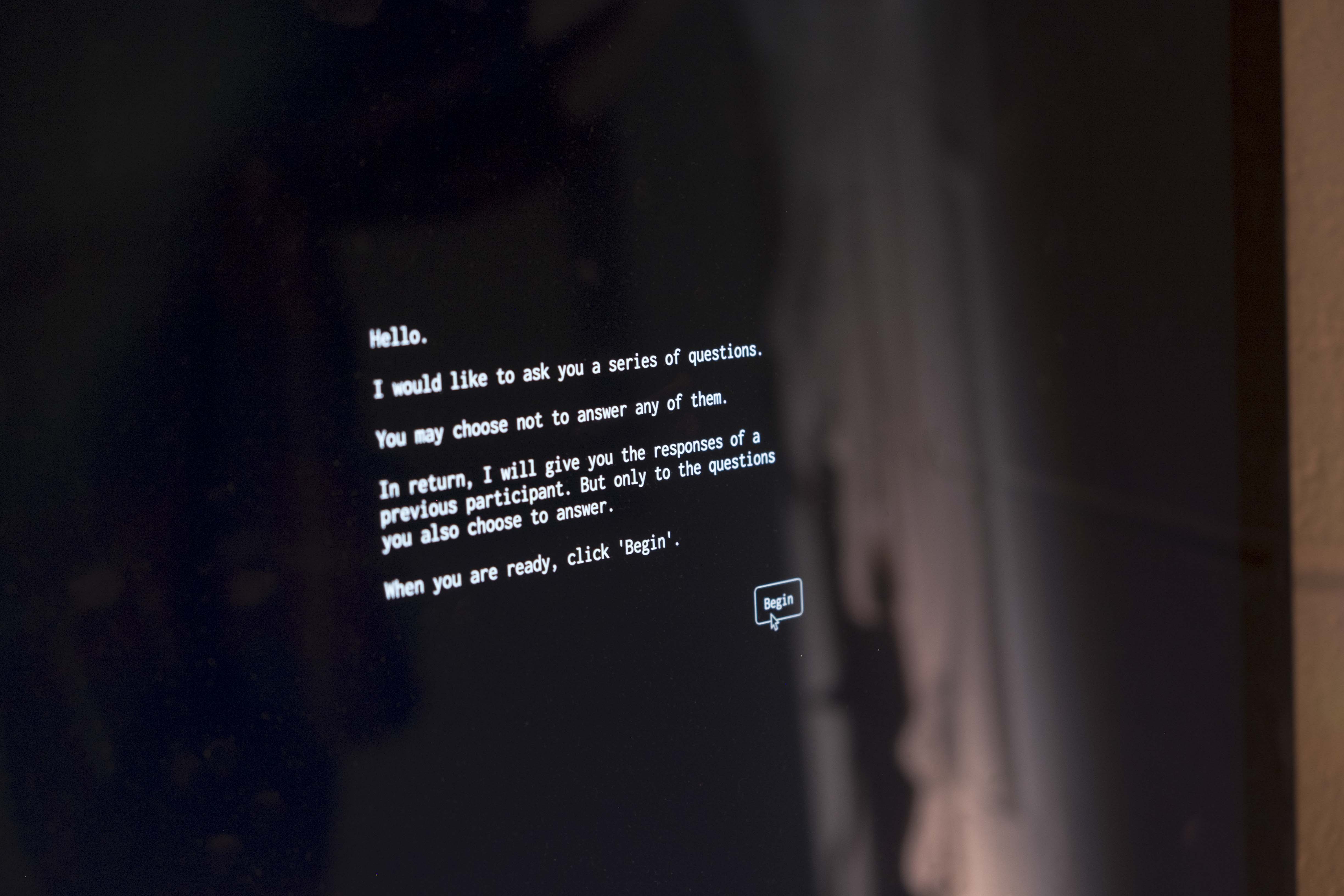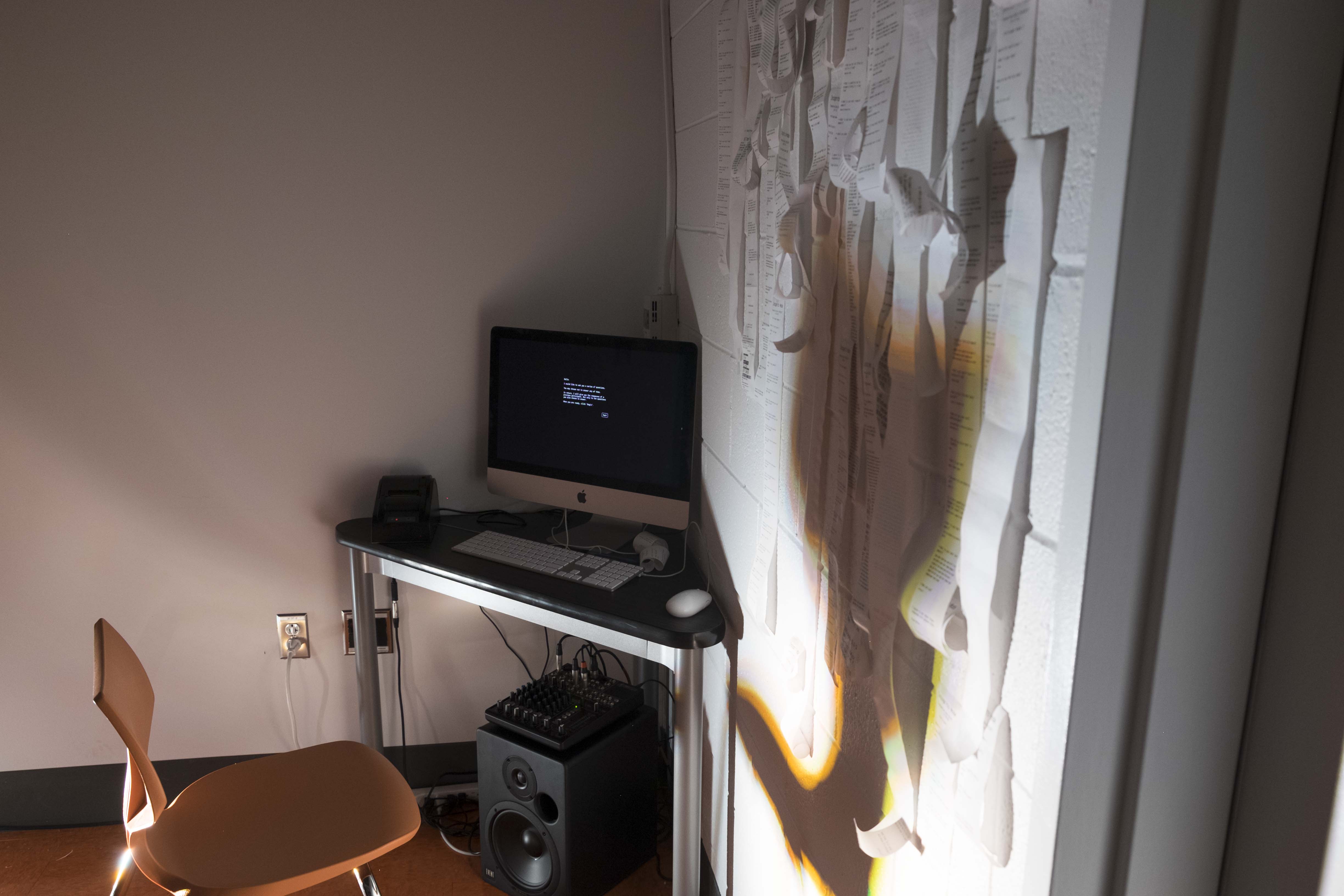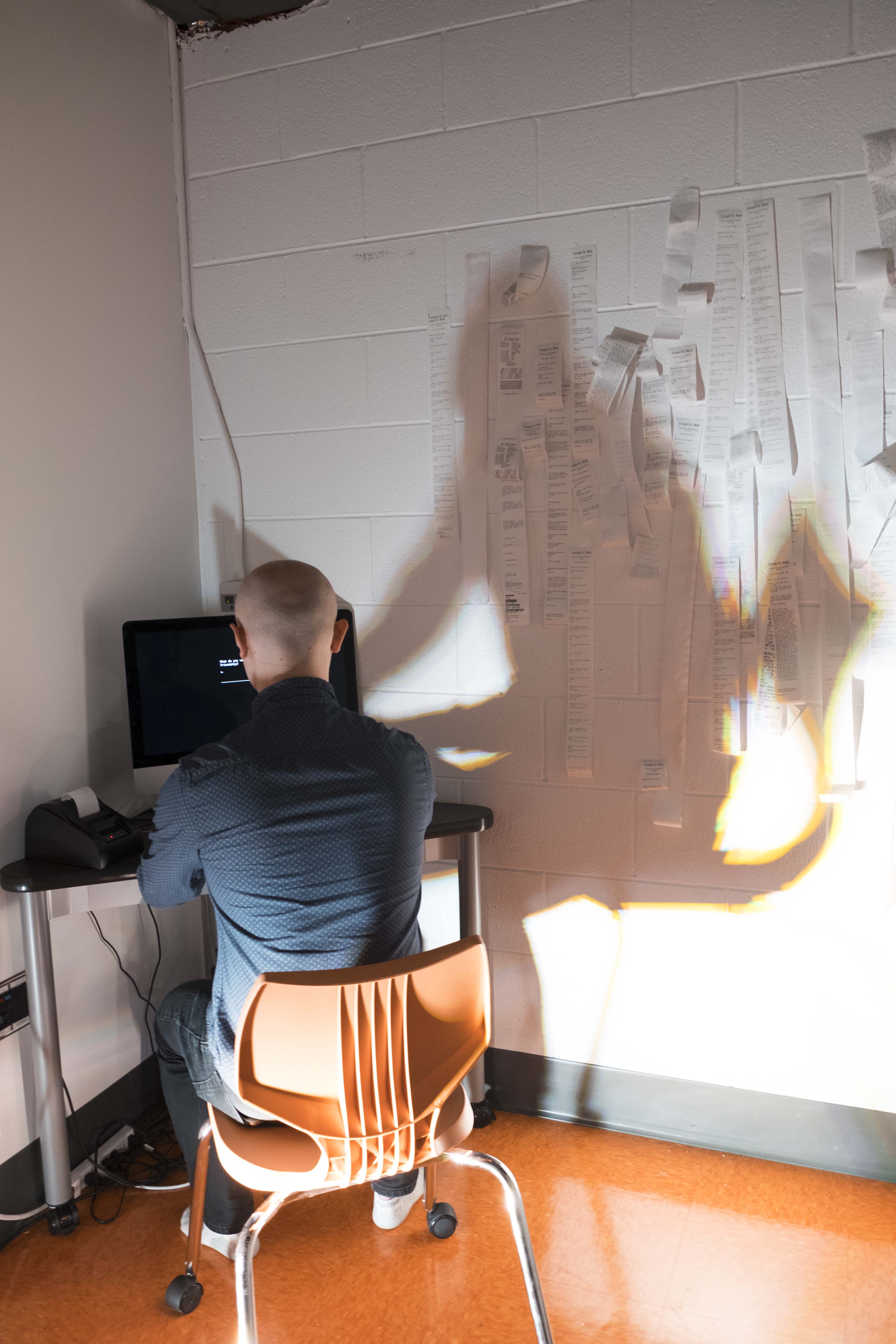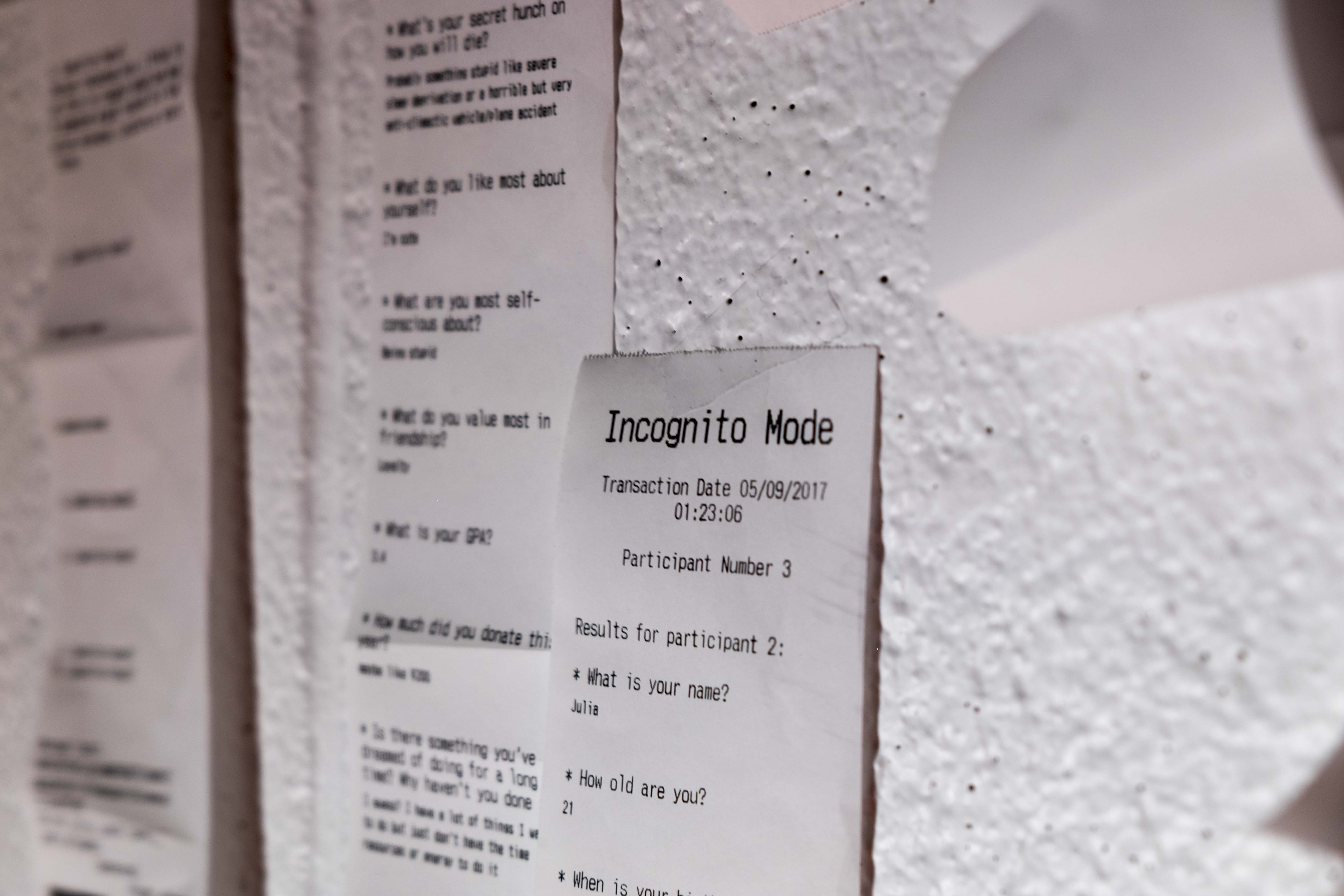Today, we often give up our personal information without a second thought. With each survey we answer, photo we post, or email address we provide, we give a piece of ourselves in return for something we deem valuable. Incognito Mode asks participants to engage with the transactional nature of our interactions with machines and with each other. It does this by asking increasingly revealing questions to the participant. In return, it promises to give the the responses of a previous participant, but only to the questions the participant chooses to answer.
This give and take dynamic is also an exercise in social dynamics and psychological behavior. Does the incentive of learning about other participants encourage the participant to be more truthful? Do the answers that one chooses to answer change depending on the context in which the piece is presented?
The exercise is further complicated by the fact that participants receive a physical copy of the answers in the form of a receipt, and that they are required to sign it, promising to not reveal its contents to others.
This installation makes use of environmental design, as well as software and interaction design. The room is set up such that the only objects in the room are a harsh LED theater life, a speaker producing an ominous drone, a table containing an iMac and a receipt printer, and a wall covered in previous receipts. The sound was programmed in ChucK, and the actual interface made use of a Flask and MongoDB backend, with a React frontend.
This project was created for STC209: Transformations of Arts and Engineering with Julia Wang and Yicheng Sun.
Video Discussion and Demonstration

Introduction Screen

Installation Environment

Being Used

